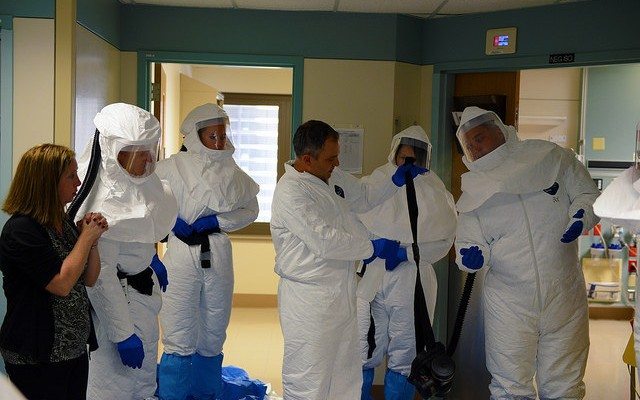 Image courtesy of [Army Medicine via Flickr]
Image courtesy of [Army Medicine via Flickr]
News
Slim Chance of Legal Recourse for Family of First American Ebola Death
The Ebola outbreak, which at first seemed like a distant fear, has become a reality in the United States, especially for the family of Thomas Eric Duncan. Duncan was the first individual to have died from Ebola on American soil. In the aftermath of his death, there has been speculation as to whether Duncan’s family will pursue a liability lawsuit against the hospital that treated Duncan. However, under Texas Law, it would be very difficult for Duncan’s family to succeed with any claims against the Hospital.
The Facts
On September 25, 2014 Thomas Eric Duncan went to Texas Health Presbyterian Hospital where he was treated for a fever, abdominal pains, and vomiting–all symptoms of Ebola. Duncan was not tested for Ebola, and in fact, he was sent home with pain relievers and antibiotics. He was diagnosed with Ebola after returning to the hospital when his symptoms worsened. On October 8, 2014, Duncan died.
The Law
In 2003, Texas passed a tort reform that gave an extra layer of protection against civil liability lawsuits for Emergency Room doctors and nurses. Under this reform, plaintiffs must demonstrate “willful and wonton” conduct in order to prove negligence. This is one of the highest legal burdens to prove in the country.
This standard requires that the individual’s conduct creates “an extreme risk of danger” and that the individual has “actual, subjective awareness of the risk involved and chooses to proceed in conscious indifference to the rights, safety, or welfare of others.” Relating to this situation, to successfully prove negligence, Duncan’s family must show that the ER doctors not only created an extreme risk of danger, but that they actually knew about the danger, and continued to act in a manner that demonstrated their indifference toward Duncan. An important aspect of this question would be to determine what exactly the doctors and nurses knew about Duncan’s condition during his first visit.
Even if liability were proven, the tort reform established a $250,000 cap for non-economic damages in a healthcare lawsuit. So even if Duncan’s family were able to prove willful and wonton negligence, they would most likely be limited to $250,000 in damages.
The Reality
The harsh reality is that Duncan’s family probably has a slim chance at succeeding in a lawsuit against the hospital. On one hand, the 2003 tort reform has been a major success. It has caused medical malpractice claims to decrease by nearly two thirds between 2003 and 2011. On the other hand it begs the question, “at what cost?”








Comments